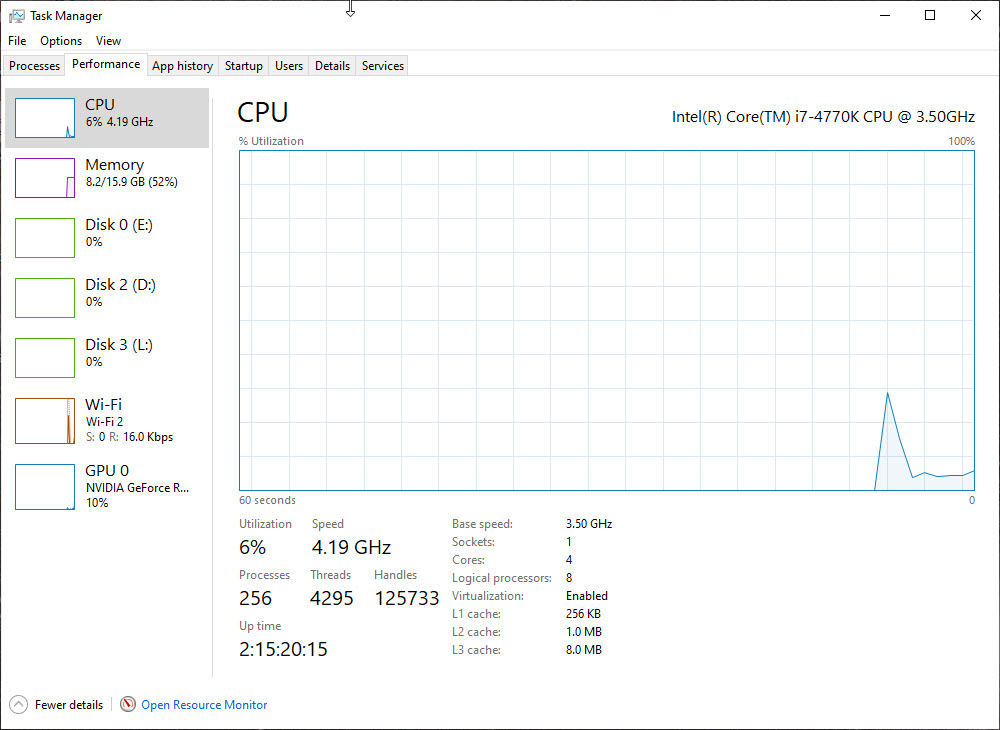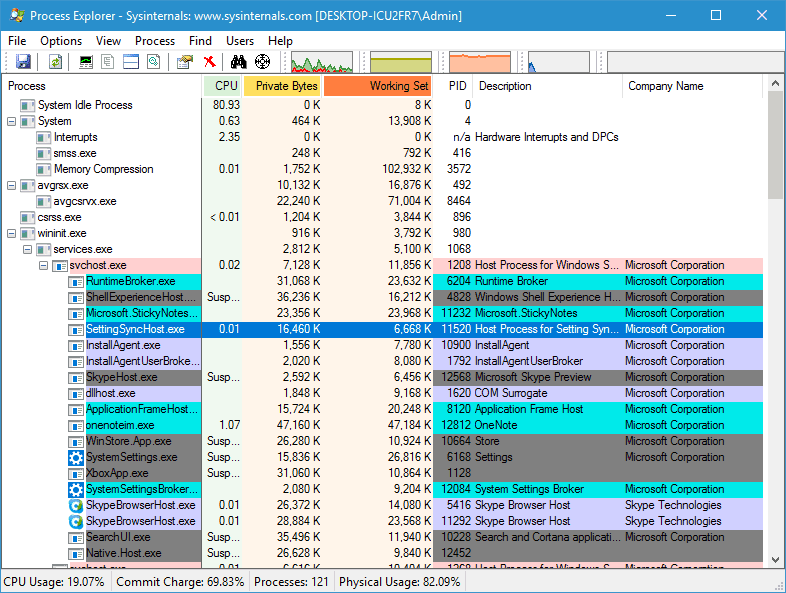

The PC is powerful enough for this job as is, but if in the future I want to watch more than one app, this approach may turn out to use too much resources. However this is meant to run all the time, which means a powershell.exe process in the background, and WMI polling every 3 seconds ( WITHIN 3 - yes I do need it to respond ASAP). Register-WMIEvent -Query "SELECT * FROM _InstanceCreationEvent WITHIN 3 WHERE TargetInstance ISA 'Win32_Process' AND TargetInstance.Name = 'notepad.exe'" -sourceIdentifier 'NotepadStarted' -action So I researched and found that you can detect a process start by registering a WMI event. I expected to find this in Task Scheduler under Events > Application or something like that, but only some applications have event sources there.
HOW TO RUN A PROCESS MONITOR WINDOWS 10 HOW TO
Hopefully, this gives you some ideas on what you can do to monitor processes on your Windows systems, and if you are wondering how to monitor something on your Windows systems, let us know at or use Ask an Expert – just look for my picture.I'm trying to tie two applications together, so that when one is started the other starts too. Here are some interesting searches using that macro: Top 10 Processes run by users that have the largest virtual memory footprint `all-windows-processes` | search Username!=”SYSTEM” | top VirtualSize Top 10 Processes that have the largest amount of disk activity `all-windows-processes` | eval DiskActivity = ReadOperationCount + WriteOperationCount | top DiskActivity Top 10 Users that are running the most processes `all-windows-processes` | stats count by Username,host | top count Top 10 longest running user processes `all-windows-processes` | search Username!=”SYSTEM” | top Polls Well, it depends on how you measure the top ten.


I’ve named my macro “all-windows-processes”. I normally place useful searches like this in a macro – either by editing my nf file or in the Manager. By utilizing the host, ProcessId and CreationDate, we get a unique key to identify each process. We need the CreationDate field because a ProcessId can be recycled on a given host. Max(ThreadCount) as ThreadCount by host,ProcessId,CreationDateĪgain, run this all together on the same line – it’s just split up for readability. Latest(WorkingSetSize) as WorkingSetSize, Max(WriteOperationCount) as WriteOperationCount, Max(ReadOperationCount) as ReadOperationCount, Here is my search: sourcetype=PowerShell:Process |

Once the data is flowing into Splunk (check the splunkd.log file if it isn’t), we need a search that will get us the processes at any given time. The SA-ModularInput-PowerShell is based on Quartz.NET – a well known open-source scheduling system for the. The schedule will be recognizable as a cron-style scheduler. I’ve picked some interesting ones around memory usage, thread counts and IOPS. Our script is fairly evident, but we have added a Select to limit the properties that are sent on to Splunk. Joel Bennett assisted with this small scriptlet: Get-WmiObject –class win32_process |Īdd-Member -MemberType ScriptProperty -PassThru -Name Username -Value |select ProcessId, Name, Username, Priority, ReadOperationCount, WriteOperationCount, CreationDate, Handle, VirtualSize, WorkingSetSize, UserModeTime, ThreadCount In order to get the owner information into the objects, we have to do a little work. For example: Get-WmiObject -class win32_process | Get-Member You can always get the list of things you can do by piping the command to Get-Member. The reason for the choice is that the objects that you get back have a bunch of useful methods on them, one of which is GetOwner() that retrieves the owner of the process – just what we are looking for. Get-Process is the de-facto standard for getting a process list from PowerShell, but I prefer the WMI approach – Get-WmiObject –class win32_process. There are two methods of getting the list of processes on a system. Once I’ve exhausted the built-in methods of getting information, I turn to my favorite tool – PowerShell. Unfortunately, the owner is not available. After all, Microsoft provides a perfmon object called “Process” – maybe I can just monitor that. One of the things I recently got asked was “how do I get a top-10 type report of processes on a system and who is running them?” This should be fairly straight-forward. We get a lot of questions here at the Splunk Microsoft Practice – not just on our apps (which are awesome starting points for common Microsoft workloads), but also how to do specific things in Windows.


 0 kommentar(er)
0 kommentar(er)
